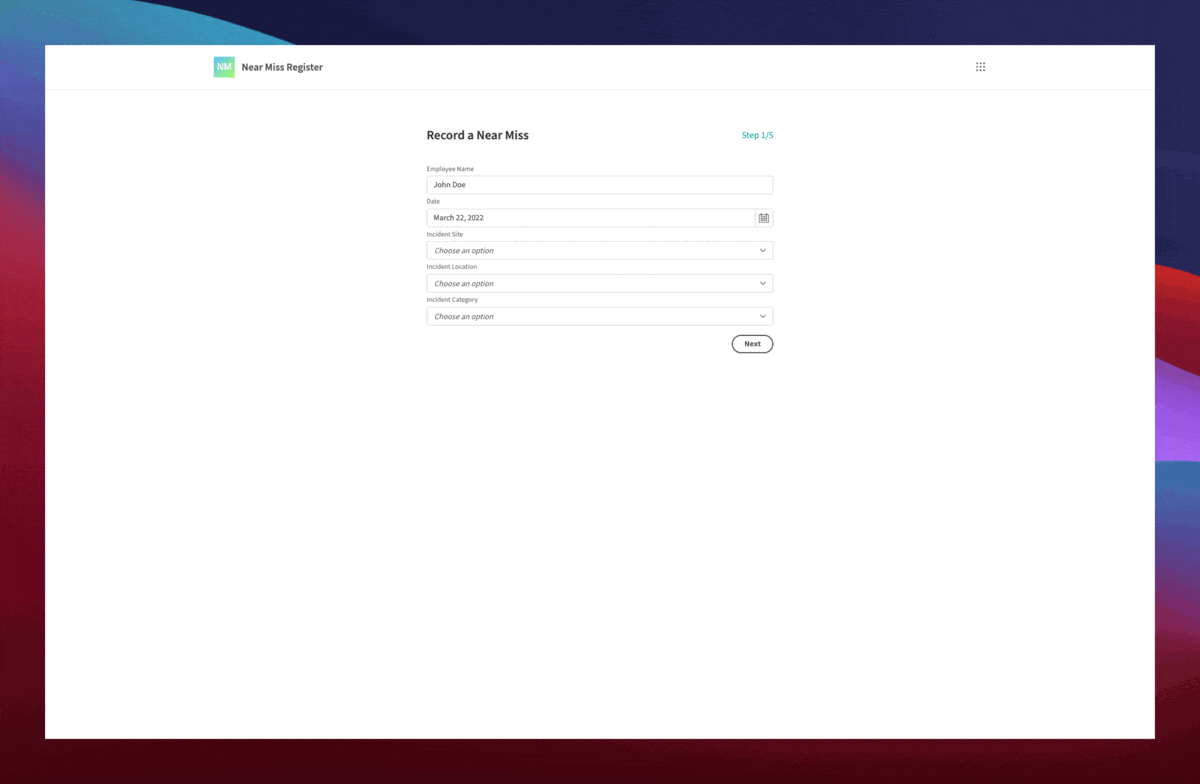
Most businesses record incidents when someone gets hurt or property gets damaged. The goal here is to learn lessons and prevent similar incidents from occurring in the future. Sometimes employees come away from incidents unscathed. Your business can learn just as much here.
Our template is a fast, intuitive, and cost-effective way to record and learn from near-misses.
What is a near-miss register?
As the name suggests, a near-miss register is used to record incidents that have the potential to cause injury or death, even when they don’t. Say a pallet in your warehouse falls from the shelf and lands a few feet from one of your stock pickers.
We’d say this is a close call. No one got hurt, but if the situation had been a little bit different, the consequences could have been dire.
This is a near-miss.
A traditional incident register might only record this if the employee actually got hurt. This prevents you from putting measures in place to stop a similar incident from occurring, just because the employee happened to get lucky.
This is far from the ideal solution for risk assessments, workplace safety, or incident management.
Recording near misses helps to quickly and easily ensure that every possible action is taken by safety officers to keep your employees safe from harm - including preventing future incidents that might result in injury or damage.
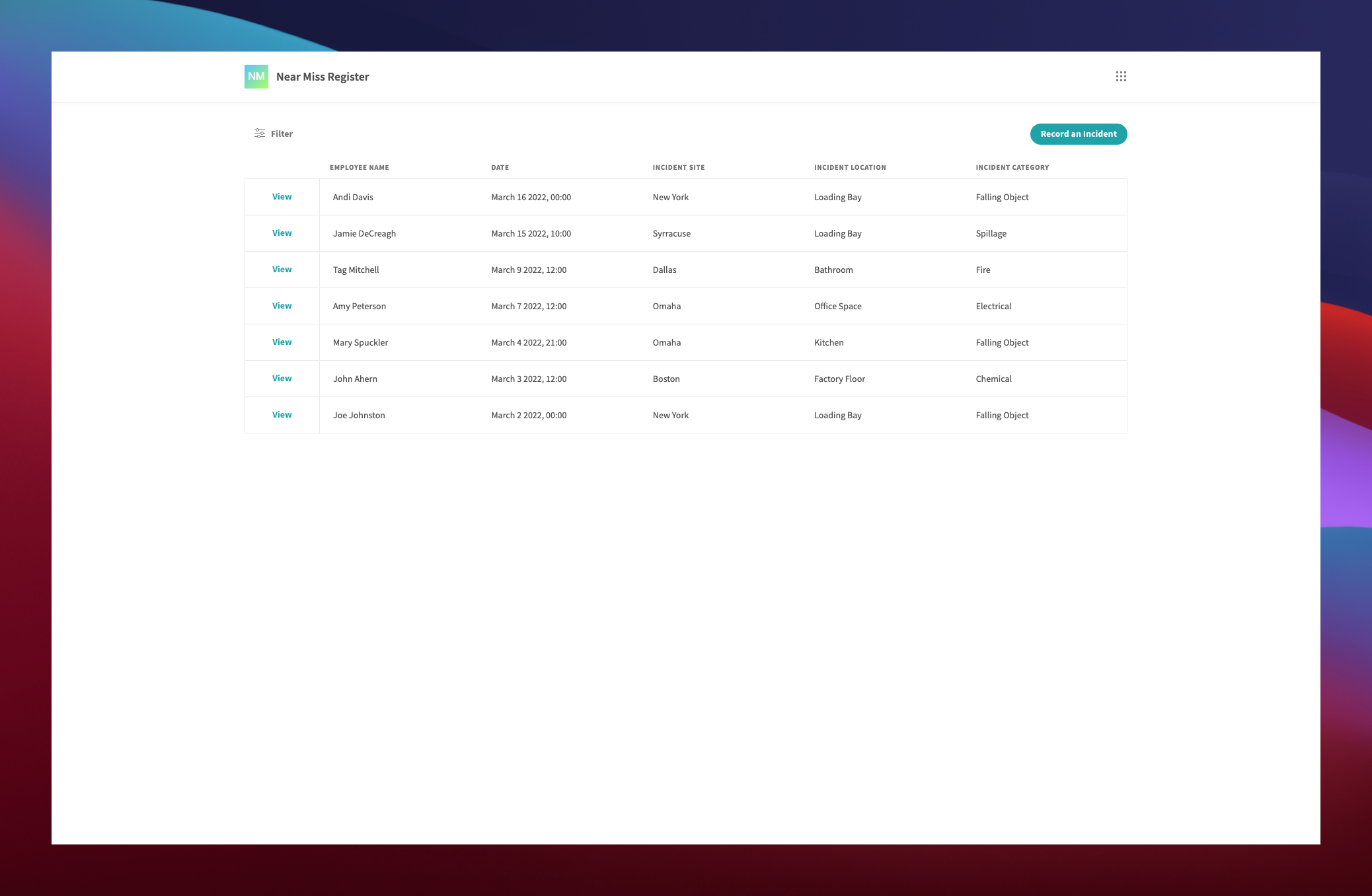
Why digitize near-miss records?
Many businesses still log incidents using pen and paper. Often, this means reporting the incident to the foreman or a HR colleague, who then logs it manually. This creates several issues.
Employees might neglect to report near-misses if they’re unable to contact the responsible person straight away. Creating a single gate-keeper for your incident logs can also prevent relevant information about near-misses from being recorded - or corrective actions carried out.
Or, they might not take certain types of incidents seriously at all.
Manually managing incidents also creates excessive admin work. This undermines your operational efficiency, by creating avoidable costs.
Digitalization eliminates all of these problems, with a dedicated near miss app being one of the most effective solutions.
What should a near-miss register contain?
A near-miss register is built around two elements:
- A front-end interface, where employees can record incidents.
- A back-end data layer, for storing, categorizing and managing this data.
The crucial thing here is that any employee can create an incident record, in seconds. This provides a more streamlined reporting process, by eliminating barriers and unnecessary admin tasks.
The most effective near-miss reporting apps provide further functionality for streamlining workflows. For instance, third-party integrations, custom automations, and support for external data sources.
Our near-miss register template
Our near-miss report form template is built for maximum efficiency, usability, accuracy, and oversight. Our lightweight, intuitive platform is the smart way to manage incident records.
Our template offers:
- Design customization.
- Conditional UIs.
- Automated workflows.
- Intuitive design.
- Custom RBAC.
- External database connectors.
- Mobile responsiveness.
- Optional self-hosting.
- Third-party app integrations.
- Efficient and cost-effective processes.
- Custom data fields and real-time updates.
Use our template as a deployment-ready solution, or fully customize it in our intuitive low-code platform.
Instant near-miss reporting
Empower your users to register incidents in a matter of seconds. We’ve created an intuitive, multi-step form UI to collect key details on incident causes, impact, follow-up actions, and employee information.
Our simple one-screen app makes it fast and easy for employees to record near-misses.
Our multi-step reporting form ensures that employees provide the exact right information, in a consistent format.
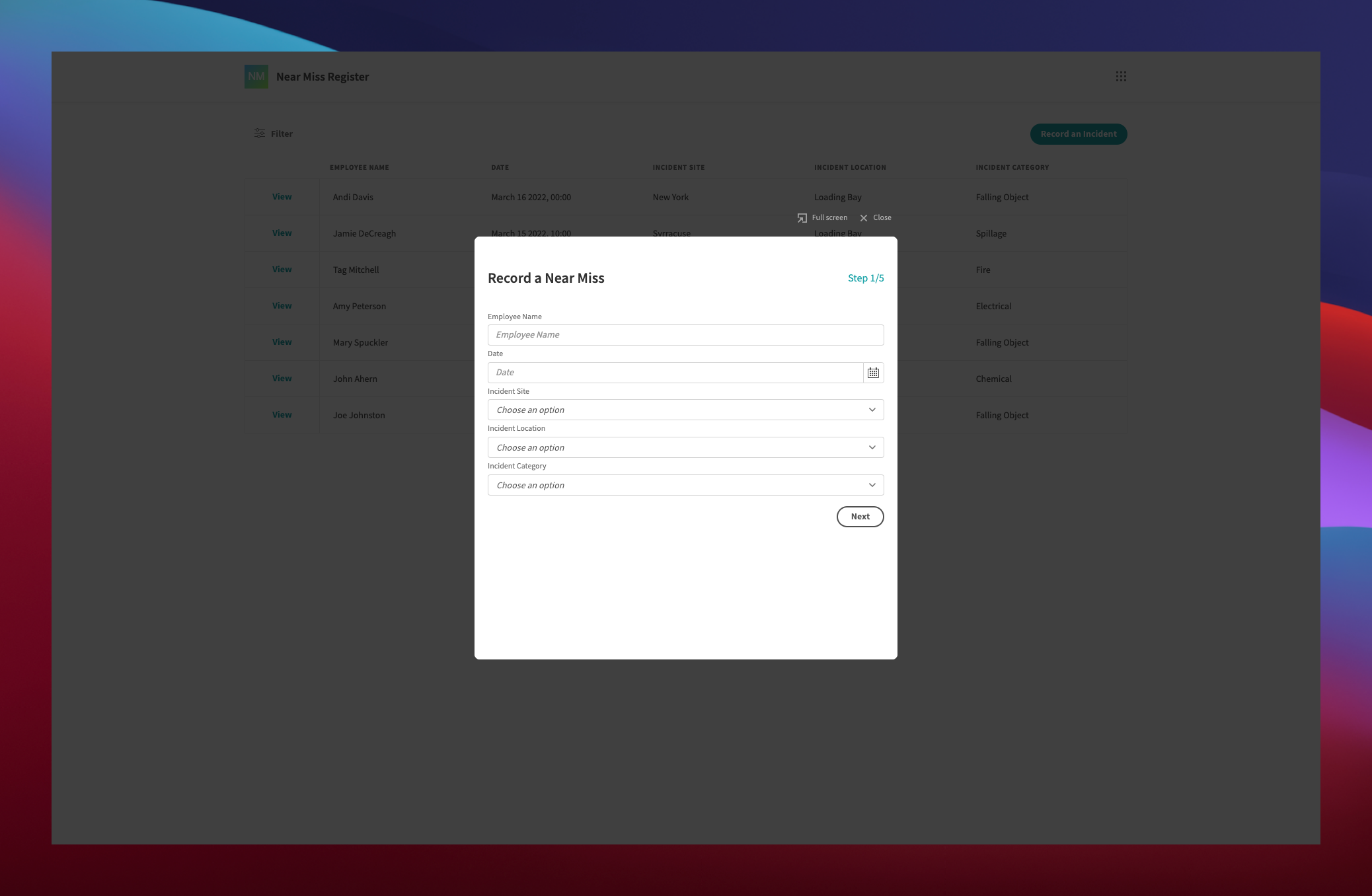
Custom RBAC
Like all Budibase tools, our template offers fully customizable role-based access control. We’ve built our template around two levels of access. Basic users can search, view, and submit near-miss reports.
Power users can then edit reports which have already been submitted.
We also provide two additional permission tiers, that can be configured to any combination of app screens. Restrict access based on users’ job role, seniority, department, location, or any other attribute.
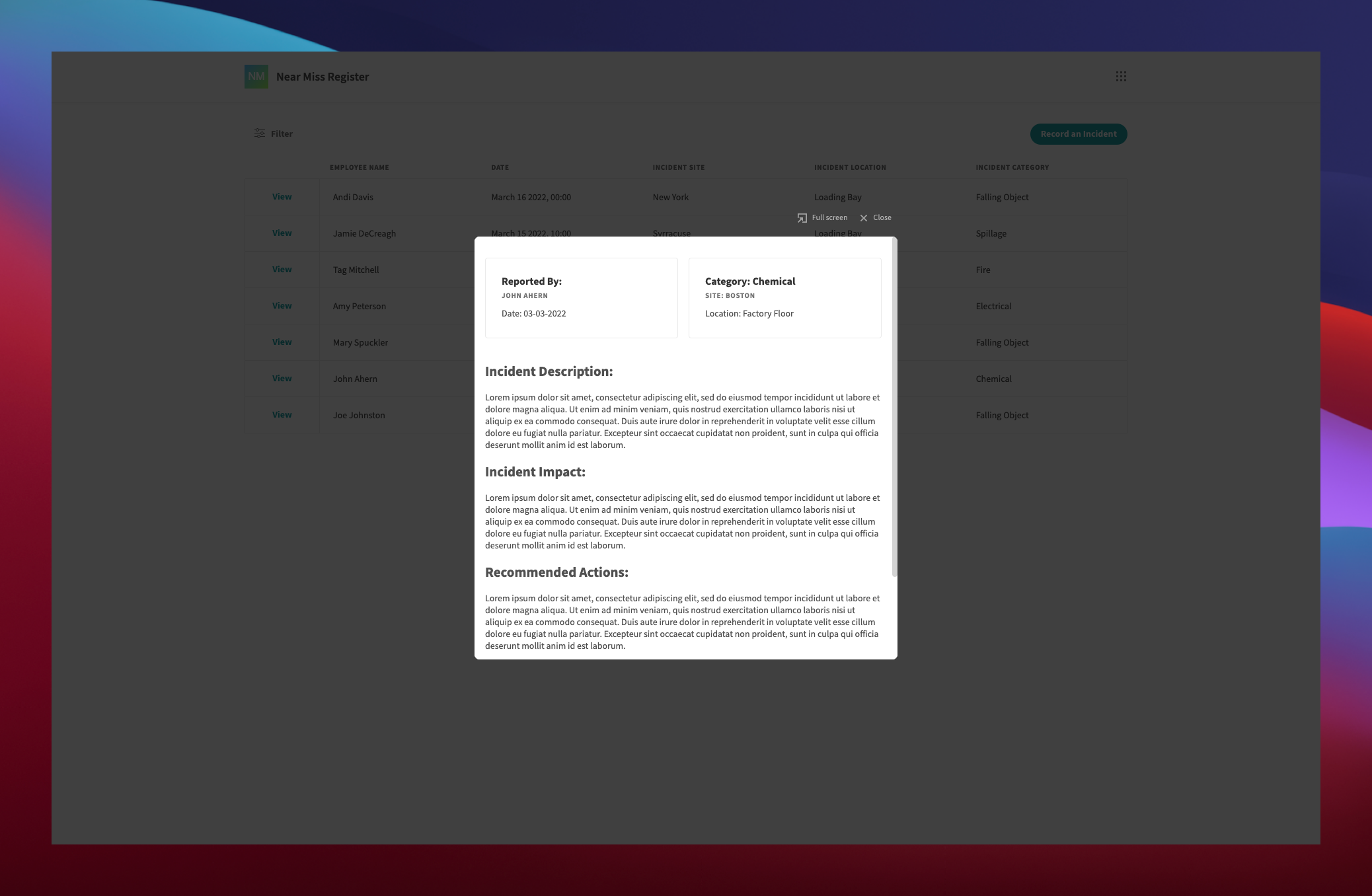
Responsive design
Our near-miss register template works perfectly on all kinds of devices. All design elements are fully responsive, automatically scaling to fit perfectly on users’ screens. Budibase components are also thoroughly accessibility tested.
Give your team a near-miss reporting tool that they can use anywhere, on any device.
The more easily your team can report incidents, the better you’ll be able to prevent injury or property damage. Our mobile-friendly record app is built to maximize app adoption.
Workflow automation
Use Budibase to build fully automated workflows. Customize our template to trigger our library of automations, with any in-app action. Create powerful custom automation rules using JavaScript, handlebars expressions, formula variables, and third-party integrations.
Connect your SMTP credentials to send automated emails from within our template.
With Budibase, it’s easy to create a range of automated workflows using near-miss data. Create your own automated taxonomies, or notify stakeholders when incidents occur.
Conditional UIs
Create amazing user experiences with our custom conditionality rules. With Budibase, you can hide, display, or update any design element, based on form inputs, user data, behavior, and more.
Use conditionality to tailor your near-miss forms for different categories of incidents. Create fully mobile-optimized UIs by displaying different elements to users on different devices.
With powerful conditional UIs, Budibase is the smart way to build highly functional, user-friendly apps.
Markdown editors & viewers
Budibase supports rich text formatting. Use our Markdown editors and viewers to create beautiful report templates. Bind any variable in or near-miss record to Markdown templates, to autogenerate reports.
Use our template to create professional-looking, shareable incident reports, in seconds.
Our bindable Markdown components are the fast and easy way to display, share, and access information on near-misses.
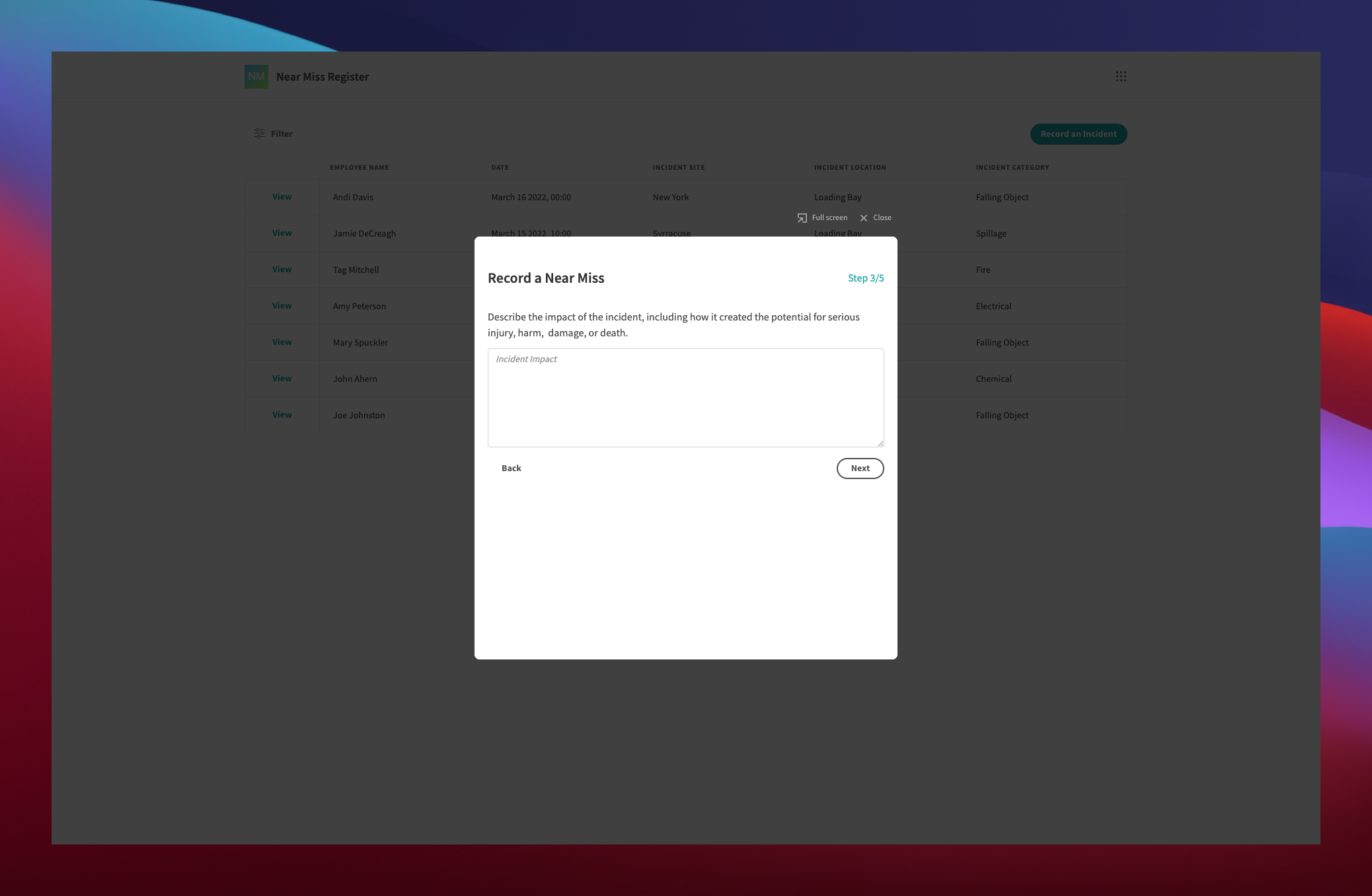
Searchability and filtering
Find the data you need, in seconds. Our template offers a high degree of searchability and filtering. We’ve added a dynamic filter to our app’s home screen, to isolate entries by category, site, employee, location, and more.
Use any combination of exact match, starts with, ends with, or numerical expressions to isolate specific entries.
Our dynamic filter components are fully customizable. Configure your filters to offer or restrict any variables within filtering expressions.
Manage incidents with Budibase
At Budibase, we’re on a mission to build the world’s largest ecosystem of open-source tools. Our low-code platform is the fast, cost-effective way to build custom solutions.
Budibase offers:
- Open-source design.
- Scalability.
- Fast deployment.
- Custom RBAC.
- Flexible hosting.
- Responsive design.
- Security.
- Automation.
- Integrations.
- Free SSO.
- Multiple data sources.
- Infinite customization.
- Built-in JavaScript editor.
Our open-source, low-code platform
We’re changing the way businesses build software, forever. Say goodbye to lengthy lead times. Use our intuitive low-code platform to build fully deployable, custom apps, in under five minutes.
We also offer a range of SLAs and support packages for enterprise users. Check out our pricing page for more information.
External database support
Budibase offers extensive support for existing datasets. Connect to existing databases with MySQL, MSSQL, Postgres, S3, Airtable, MongoDB, CouchDB, S3, Oracle, Rest API, and more.
We also offer our own built-in database, with CSV upload support. Budibase is the easy way to centralize and organize existing data.
Hosting and deployment options
Choose self-hosting or Budibase cloud for your near-miss register app. Deploy Budibase tools to your own infrastructure, using Kubernetes, Docker, Docker Compose, Digital Ocean, and more.
We empower our users to choose the exact right hosting and deployment options for their unique requirements. Build professional web apps which work perfectly on any device.
Third-party integrations
Budibase offers a wide range of third-party app integrations . Connect to external tools, using Zapier, Webhooks, Rest API, and more. Trigger automations in external apps, using any in-app action.
Connect our near-miss register template to communications tools, HR software, admin panels , approvals apps , portals , and more, for truly integrated workflows.
Security
Organizations around the world trust Budibase to secure their data. With optional-self hosting and custom RBAC, we empower our users to choose the exact right security standards for their needs.
We also offer SSO across all of your Budibase tools, as well as OAuth and OpenID support.
Scalability
As your business grows and changes, your software stack must evolve with it. Budibase tools are ready to meet new and emerging challenges. Quickly add new users, screens, data, and functions.
With Budibase, it’s fast and easy to build custom tools to save a huge variety of business problems.
Start using Budibase today
At Budibase, we’re changing the way businesses build custom tools. With our open-source, low-code platform , you can create fully deployable web apps, in under five minutes.
Use our templates as deployment-ready solutions, or tweak and perfect them to suit your unique requirements.
Deployment options
- Budibase Cloud Host with Budibase and let us manage everything for you. Quick and easy.
- Docker Self-manage Budibase using Docker and Docker Compose.
- Kubernetes Use the Budibase helm chart to deploy Budibase directly into your Kubernetes cluster.

- Digital Ocean The simplest way to self-host Budibase on your own infrastructure - 1 click install.

